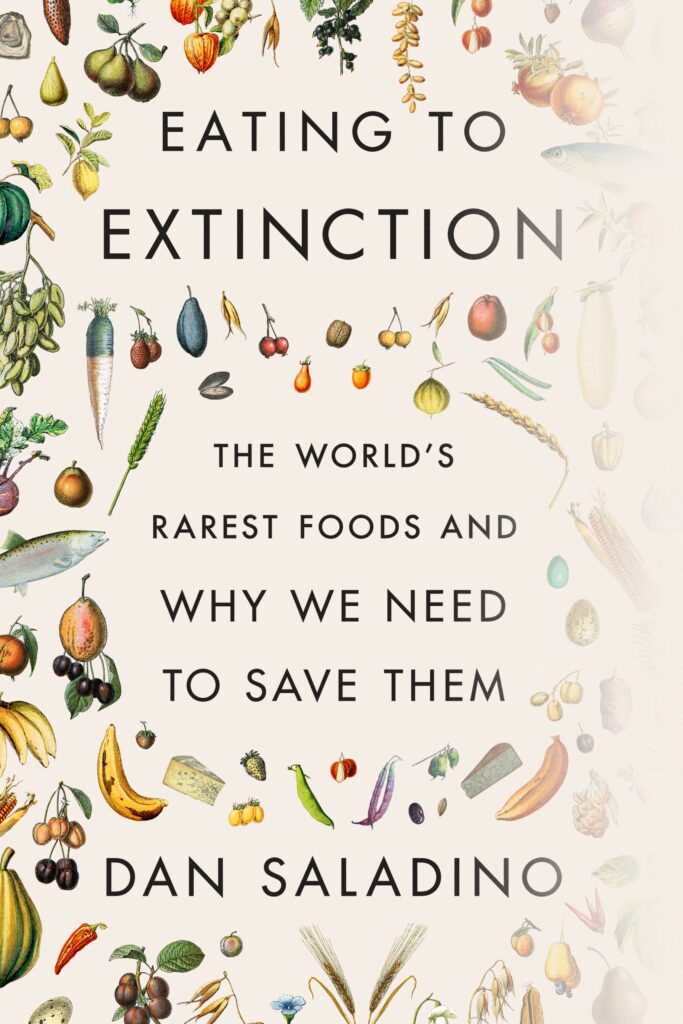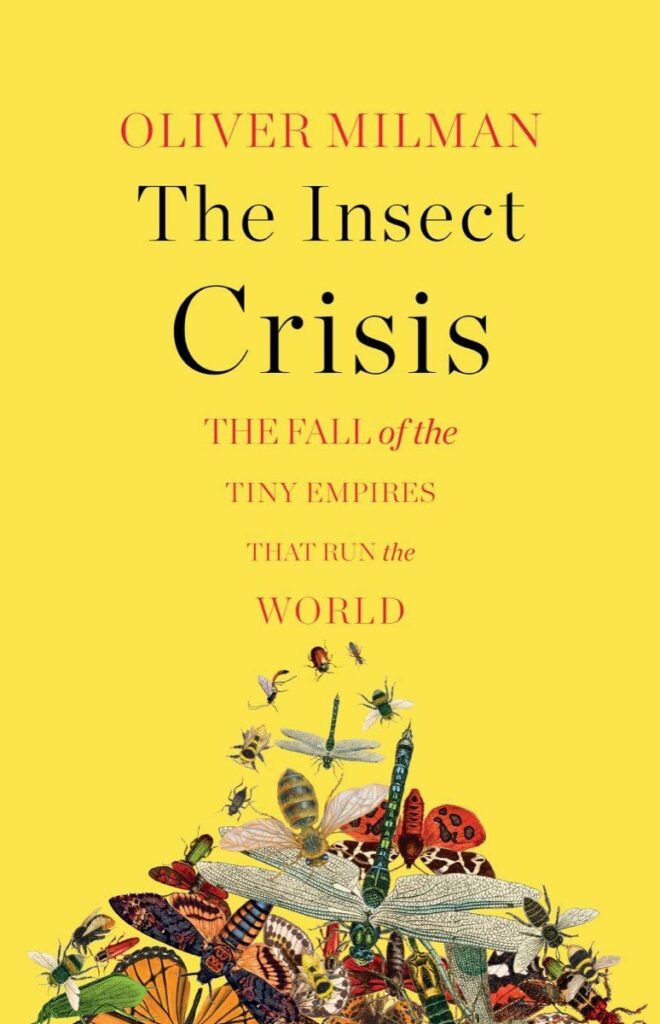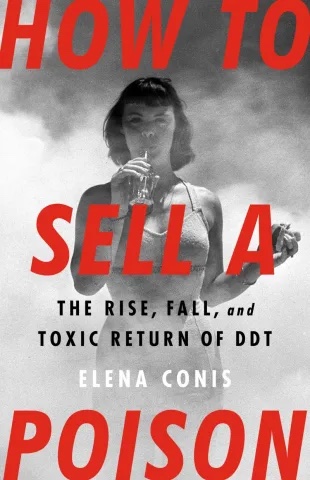Looking for a book to read this summer? Here’s a look back at some of our favorite books reviewed in The Maine Organic Farmer & Gardener in 2023. The short list includes cookbooks and deep dives into some of the most pressing issues of our time, from climate change to biodiversity loss.
For the full reviews, as well as other books we’ve enjoyed, visit our blog.

“Wildcrafted Vinegars: Making and Using Unique Acetic Acid Ferments for Quick Pickles, Hot Sauces, Soups, Salad Dressings, Pastes, Mustards, and More” by Pascal Baudar, Chelsea Green Publishing, 2022
The book is a true choose your own adventure just like a meandering through a field and gathering strategies and ingredients. Baudar gives the reader three levels of vinegar making. One can make wine from scratch and introduce a vinegar mother (sourcing and creating a vinegar culture is covered). One can start with a delicious wine or juice and turn it into vinegar and flavor it. Or one can purchase live vinegar and flavor it. But within each approach are multitudes of side ventures in the form of varying approaches to acetic fermentation. Over 100 recipes show how to use homemade vinegars in making a wide array of dishes from soups to salads to desserts and jam. Recipes include smoked mushroom and seaweed vinegar, pine-, fir- and spruce-infused vinegars, pickled unripe walnuts, pickled mustard leaves, raw hot sauce, mountain oxymel, and sow thistle capers.
– Roberta Bailey

“Eating to Extinction: The World’s Rarest Foods and Why We Need to Save Them” by Dan Saladino, Farrar, Straus and Giroux, 2023
Drawing on over 10 years of travel and research to document food on the brink of disappearing, BBC food journalist Dan Saladino created the captivating book “Eating to Extinction.” Divided into 10 sections of food types (including cereal, vegetable, cheese and alcohol), Saladino delves into the threats to food around the world. The emergent patterns articulate the bleak reality that the industrialization and globalization of food systems have smothered localized diversity, with a particularly disturbing concentration of a few corporations in control of what is produced. It is alarming that most seeds used for agriculture in the world are sold by only four corporations, that 50% of calories consumed globally are from only three plants — rice, wheat and corn, a tiny 0.05% of the 6,000 plants humans have regularly consumed in the past — and that most pork produced globally is based on the genetics of only one breed of pig. The examples go on.
– Catherine Preston-Schreck

“Our Changing Menu: Climate Change and the Foods We Love and Need” by Michael P. Hoffmann, Carrie Koplinka-Loehr and Danielle L. Eiseman, Comstock Publishing Associates (Cornell University Press), 2021
As a chocolate lover and morning coffee drinker, I worry about the impacts a changing climate will have on my favorite foods. Those same concerns are what inspired Michael Hoffmann, an entomologist studying biological control, writer Carrie Koplinka-Loehr, and Danielle L. Eiseman, who once worked as a chef, to collaborate on this book. They structure the book like a menu — from pre-dinner drinks to salads, mains, sides and desserts — to explain what is happening and what we can do about it. First they set the table. Instead of linens and silver, they set out three big challenges the world faces: an increasing population; preservation of agricultural land; and nourishing the poorest people. They explain how the impacts on water, soil, plants and pests are altering our menu “as unprecedented climate changes make it more difficult to maintain or increase food production.”
– Sue Smith-Heavenrich

“The Insect Crisis: The Fall of the Tiny Empires That Run the World” by Oliver Milman, W. W. Norton & Company, 2023
The loss of insect biodiversity, and biodiversity in general, is as great an emergency as the climate crisis says Oliver Milman in “The Insect Crisis.” Chapter by chapter he explores this hidden emergency, beginning with the intricate ways insect lives are woven into ours. He takes us into the field with scientists and farmers, and shows how data is collected and analyzed. To understand the scope of the crisis, Milman begins by highlighting some of the winners and losers in the insect survival game. The big losers are bumblebees, at least in North America. “The abundance of four species of bumblebee has plummeted by as much as 96 percent in recent decades,” he writes, noting that their ranges have shrunk by nearly 80%. Beetle populations have declined steeply since the 1970s. Included in those losses are dung beetles that, by their actions, increase soil fertility and improve soil structure. In the United Kingdom, moth populations are down by a quarter and butterfly populations are half what they used to be. And yet, Milman notes, chemical companies continue to sell insecticides and people continue to refer to insects as “creepy crawlies.”
– Sue Smith-Heavenrich

“How to Sell a Poison: The Rise, Fall, and Toxic Return of DDT” by Elena Conis, Bold Type Books, 2022
“How to Sell a Poison: The Rise, Fall and Toxic Return of DDT” by writer and medicine historian Elena Conis is a meticulous chronicle of the complex forces that brought the insecticide DDT into prominent use, eventual disuse, and more recent resurgence. Though DDT is the focus of Conis’ research, ultimately, this is a story about the social, economic and political entanglements of science. Told as a gripping narrative of promise and disappointment, with tense courtrooms and research epiphanies, it is an excellent read. Even though DDT use had been on the decline, in 2006, in part due to the U.S. Agency for International Development and the World Health Organization stating that DDT was “one of the best tools we have against malaria,” global DDT use doubled from 2002 levels. Conis demonstrates that science has been and continues to be a site where societal inequities, political differences and economic interests play out, reminding us that it is often the bodies and wellbeing of marginalized communities that carry the heaviest burdens. As I write this, areas of the Penobscot River have levels of DDT, PCBs (polychlorinated biphenyls) and dioxins so high that people should not eat more than two fish harvested from its waters per month. People everywhere, including in Maine, continue to live in the shadow of DDT.
– Catherine Preston-Schreck

“What Kind of Ancestor Do You Want to Be?” edited by John Hausdoerffer, Brooke Parry Hecht, Melissa K. Nelson and Katherine Kassouf Cummings, The University of Chicago Press, 2021
This collection presents the idea that we are all ancestors-in-waiting and that the choices we make today will shape the world that our descendants inherit. It draws on insights from Indigenous communities and ecology to suggest that we should approach our role as ancestors with humility, reverence and respect for the natural world. One of the strengths of the book is the variety of personal stories, interviews, philosophical insights and scientific data that is woven together within its pages from the many collaborators who are pondering this same question. Besides the actual poems included within, there is a poetic tone that carries throughout the book making it pleasant to read even when dealing with some of the heavier aspects of our current time.
– Denise DeSpirito
